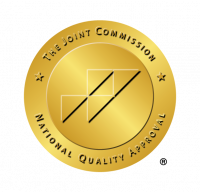The rise of AUD and Binge Drinking
Since the pandemic, heavy drinking has been on the rise, with 1 in 5 Americans having two heavy drinking days a week at least twice a month in 2021. This has disproportionately affected women and the increase has been so drastic that women’s alcohol consumption is starting to catch up to men’s. The number of drinking days per week has increased by 14% on average, but for women, it’s increased 41%. This is resulting in a concerning increase in rates of alcohol use disorder (AUD) and associated consequences.
Alcohol-related deaths jumped 25% between 2019 and 2020, a major increase over the past two decades where the average rate of death increased was 2%. People ages 25-44 are also suffering the greatest increase in alcohol-use disorder mortality rates, which, in 2022, were already 22% higher than projected. Overall, by 2040, the increases in alcohol consumption during COVID 19 are expected to result in 8,000 additional deaths, 18,700 cases of liver failure, and 1,000 cases of liver cancer.
With this issue affecting women particularly strongly, employers need to be able to understand how to serve women with expanded mental health benefits while also ensuring that they’re giving their employees the right kind of support that’s accessible and stigma-free.
Employers are facing challenges with providing mental health services
This increase in drinking and the resulting increase in AUD isn’t just a personal affliction—it can result in societal, personal, and work-related issues. For employers who are already struggling to meet employee needs, the rise of AUD will only exacerbate the pressure. Alcohol misuse results in increased absenteeism and presenteeism and can result in lost productivity, low employee satisfaction and high turnover rates. 70% of employers say retention efforts have been hurt by mental health and wellness concerns.
However, employers can’t just enlist the services of the nearest or cheapest substance abuse treatment providers, nor should they try to support their employers with a carte-blanche option that lacks accessibility and doesn’t provide the best outcome. 43% of employers say they’ve seen an increase in mental health reasonable accommodation requests since the pandemic and 76% say increasing access to mental health services is a key priority.
Employers must find the right way to address the mental and behavioral care needs of employees, which requires being aware of what their employees want, what their challenges are, and how to increase access to any benefits or services so they’re properly utilized.
How women are particularly being affected by AUD
Since the pandemic began, we’re seeing alarming trends and data on how AUD, heavy drinking, and other mental health issues are starting to affect women. Roughly, over the past two decades up to 2018, suicide rates have increased more for women than men, with alcohol increasing the risk of suicide at a greater rate for women than men.
Alcohol is more dangerous for women than for men — they’re at higher risk for cirrhosis, alcohol-related liver disease, breast cancer, and also experience a worse impact on the brain and heart as a result of alcohol consumption.
To better serve their employees, employers need to understand how AUD and broader mental health challenges can affect women. Awareness of the issues at hand is a start, but employers should do their research to understand what services are out there. New digital health services can not only tailor mental health treatment, but also open up accessibility so more employees can comfortably access these services on their own time and in their own home.
To learn more about how women can be served by new digital health services, check out our upcoming panel discussion live on Dec. 13 featuring experts from industries in digital health services who will discuss how the future of health can better serve women’s increasing health needs.
Resources
https://www.health.harvard.edu/blog/women-alcohol-and-covid-19-2021040622219
https://www.eurekalert.org/news-releases/960214
https://docs.google.com/presentation/d/1mNrWd74yUj2Hl6HF26toTxVKJLG35JSOTex8SWqFFA4/edit#slide=id.p7
https://docs.google.com/presentation/d/1OsCHNXV-mOBLgPCRIkO8FkhM9bDUDLMc/edit?rtpof=true&sd=true
https://luskin.ucla.edu/alcohol-use-prior-to-suicide-trends-higher-in-women-than-men-in-new-study

